Diggin' In
The Richard Gienger Report
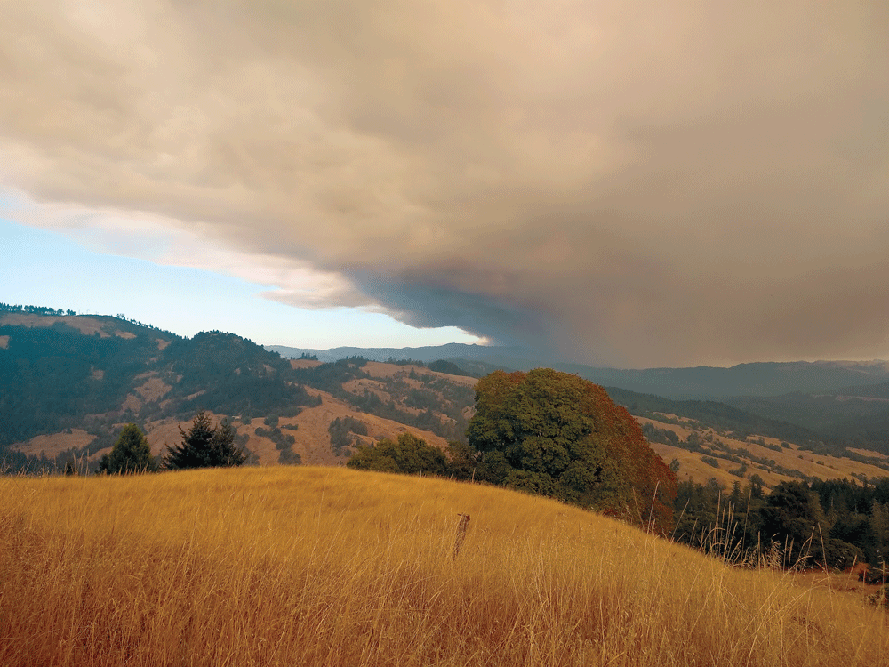
Sort of tangled up in blues, threats, and complexities here. It’s not just some huge-impact fires in California, but all along the West Coast—with flames, floods, severe storms, melting icecaps elsewhere and ongoing COVID-19 with manic and destructive attitudes and actions. A “rethink and redo” moment needs to spur us on multiple levels or else.
Ah, where to start? Which fire? The one that burned into Vacaville? Or California’s historically largest: the August Complex Fire that originated from lightning strikes, 37 fires that merged and grew to over a million acres in five counties, burning Ruth, crossing Highway 36, burning homes around Kettenpom, threatening to cross the Main Eel River. Folks frantically preparing go-bags from the North Fork Eel, Mad, and Van Duzen Rivers to the Pacific Ocean. Wind-driven fire fear, so real. Smoke so bad in places along the West Coast, you needed a flashlight to guide you on sidewalks in the middle of the day (Willits). Evacuation orders and warnings given. CalFire, Forest Service, local fire personnel, and crews from all over the country were engaged week after week. [Listen to KMUD interview by Lauren Schmidt of retired logger & fire hero at Kettenpom: https://soundcloud.com/kmudnews/kmud-local-news-09-30-20 (19:05 to 25:19)]
Where to end? The fire(s) that might erupt in the next two days in the Northern California Red Flag Warning zones and Public Safety Power Shutoffs? [Editor’s Note: written on Oct. 21, 2020]
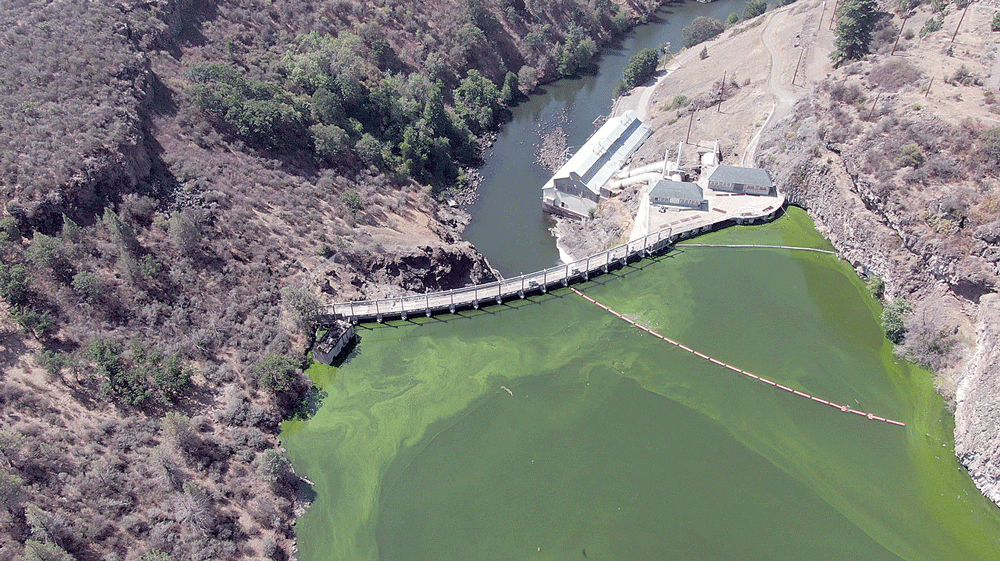
A very local threat was the Diamond Fire toward the end of summer on the Gibson Ridge between the Mattole River and Sproul Creek when a feller-buncher rolled and caught fire. Luckily four local volunteer fire companies were on it almost at once, and CalFire aircraft hit the area with retardant as well. The operator was thankfully unhurt when one track dropped into a steep cutbank of a road hidden by thick brush. A week or so later the Board of Forestry passed new rules allowing tethered logging yarding systems to be used in steep and riparian areas. This feller-buncher was not tethered to a secure anchor, but if it was tethered and the operator was surprised again by hazardous terrain, the tethering would not prevent rolling. This was pointed out to the Board, but the new rules passed unanimously. Some of the arguments during rule creation were that there are diminishing numbers of fallers with skill-sets that can handle cutting trees on steep slopes, and tethered mechanized falling and yarding systems are safer. Not so sure about fire risk.
Green Diamond Resource Company (GDRco) is commencing to manage the approx. 9,000 acres of former Barnum land with sets of 30-acre clear-cuts returned to for re-cutting every 45–50 years, progressively carried out by yearly THPs that will cover most of the whole ownership over time. Thank goodness there are stronger protections for most riparian areas now than there were before Charles Hurwitz of PL/Maxxam broke the industry taboo against no-cut buffers during the Headwaters deal in 1999. The subsequent Anadromous Salmonid Protection rules set up 30’ no-cut buffers on Class I and some Class II streams with other varying protective measures for all watercourses.
Sorry to drift from the fire theme, couldn’t help it. It’s so sad that the Green Diamond and Sierra-Pacific style of “efficient” commercial timber operations creates diminished quality of timber products with smaller and immature trees. At the same time, they say they are storing carbon faster in furniture and houses, while the overall capacity of the forests to remove CO2 from the atmosphere and sequester carbon is reduced. When push comes to shove in the coming decades, those no-cut buffers and other protections could come under assault. It’s not hard to imagine perceived emergencies trumping long-term resource conservation ethics.
Speaking of which (and you thought the timber wars were over): forest management – climate change – forest management – climate change . . . It was serious and amusing to watch California’s Secretary of the Natural Resources Agency, Wade Crowfoot, take on Trump when Trump came to California recently. Governor Newsom got in some solid points too. Trump said, “It’ll start getting cooler—you just watch.” Search YouTube for “wade crowfoot & donald trump”.
The catastrophic fires in California in 2017 and 2018 triggered Governor Brown to convert the Forest Mortality Task Force (focused mainly on drought and massive tree death in the southern Sierras) into the Forest Management Task Force covering the statewide situation. Governor Newsom expanded that effort and added proclamations that among other things prioritized and carried out 35 emergency firebreaks. The Forest Management Task Force (FMTF)—with effectively over 200 “moving parts”—working and focused, stepping up the scale and pace of thinning and prescribed fire, important immediate and continuing measures but without long-term standards and practices. An “unholy” state and federal alliance, with a recent MOU and proposed legislation, is in the process of facilitating massive actions with inadequate thought and wisdom. All this, along with historical industry & governmental systemic & systematic stifling of cultural & forest reforms, creates a situation whereby those controlling forest practices in California believe that the EMERGENCY gives them the “social license” to do as they please with no time wasted over forest management arguments with the public.
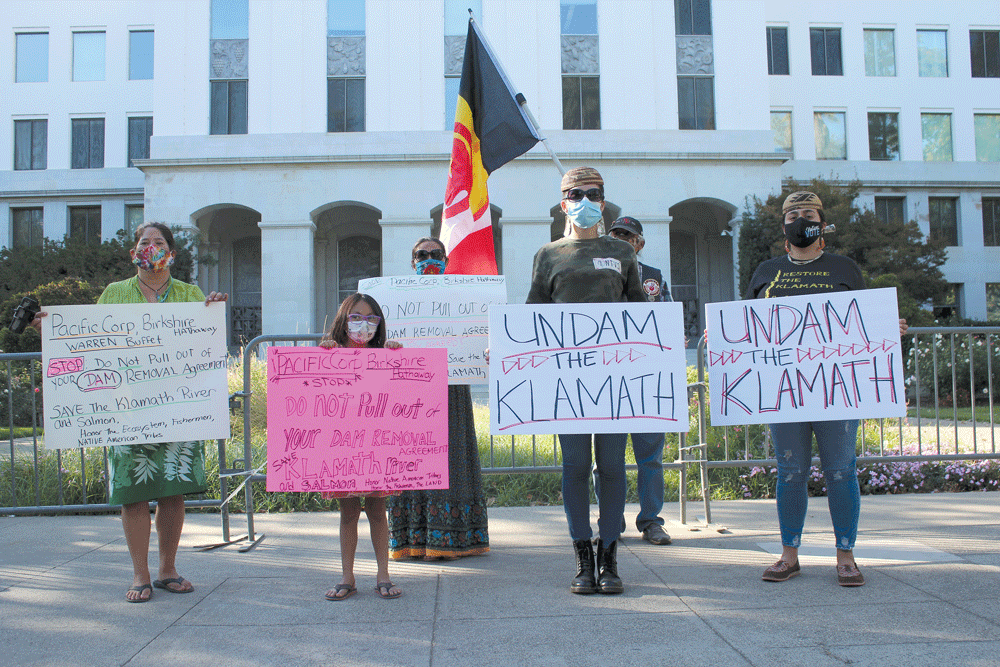
Ironically, the COVID-19 crisis has created stepped-up electronic and virtual communication unhampered by expensive and polluting travel. There are multiple webinars every week, and sometimes every day, on topics vital to the actions alluded to above. Things get really complicated and detailed fast, combined with critical divisive political turmoil magnification. Everyone wants “healthy and fire resilient” forests ASAP without setting adequate standards, or addressing human relationships on a spatial and temporal scale that is realistic.
There are multiple documents being produced by multiple Working Groups and sub-committees. There are regional Working Groups also. Some of the drafts relate to roads (CalTrans-lead),non-industrial landowners, public lands, and Climate Resilient Future Forests (CRFF). One of the recommendations of the CRFF sub-group draft is to have the state require education for prospective foresters and current foresters in the design and implementation of climate-adapted forests—those healthy and resilient ones, which of course will require a larger proportion of larger and older trees. At a subsequent meeting this confused the Sierra Pacific lobbyist and got a full-balk from the small forest landowner. Officials with a forester over-sight organization thought this was already covered with currently available curriculum. One might make that argument, but job opportunities for truly “healthy and resilient” forests are slim. Jackson Demonstration State Forest (JDSF) has a pretty small staff…
How to Help or Learn More:
- Support the forest models JDSF, RFFI/URF, and others that actually seek to provide quality forests—and recover ecosystems—enabling direct human and long-term benefit while recovering quality forested watersheds. Search: Jackson Demonstration State Forest California for the story of how a completely cut and burned forest in 1946 grew to be the foremost example today of the high-quality forest intended under the 1973 Forest Practice Act. Please stay connected at Forests Forever for information to help you act for forest protection and recovery. Stay up to date with Redwood Forest Foundation & Usal Redwood Forest
- Insist on the state setting a course that will take generations of commitment to return healthy, high-quality forests to California—and not settle for 5 years of “stepped-up pace and scale” of thinning and prescribed fire. Attaining larger and older trees is integral to fighting climate change and as necessary as human communities’ need to reform settlement patterns and impacts. Go to Why Forests Matter. For California’s emergency moving parts, processes, documents, and recordings go to fmtf.fire.ca.gov
- A Richard Wilson – Sharon Duggan article about taking forest stewardship out of CalFire and placing it independently in the Department of Conservation is getting well deserved attention and giving a realistic basis to bring thoughtful long-term stewardship to California’s forests without being lost in the huge, world-renowned, emergency and fire response mission that CalFire has evolved into, dwarfing the amount of qualified personnel, focus, and funding currently directed toward long-term quality forest stewardship within CalFire. Search: why it is time for a calfire divorce. Complete title in 2020 issue of Golden Gate University Environmental Law Journal: “Why it is time for a ‘CalFire Divorce’: The case for establishing an independent forest & resource agency to secure healthy forests in California.” Richard Wilson was the Director of the California Department of Forestry (now CalFire) during the 1990s, one of the positions he has taken on during his famed career. Lawyer Sharon Duggan is renowned for the EPIC v. Johnson (Sally Bell Grove) case, one of the multiple accomplishments in her illustrious legal career protecting habitats and endangered species.
- If you want some solid Oregon-based context for what amounts to past and continuing “Timber Wars,” from fighting for old growth to protecting Northern Spotted Owls to real human dilemmas to the Northwest Forest Plan to the fires of 2020 right into this September—see the excellent 7-episode Timber Wars podcast from Oregon Public Broadcasting. Each one is over 30 minutes and filled with primary sources. Dynamic and real conflict, semi-resolution, spectrums of hope and tribulation leaving one thinking about what changes must come about for sane and lasting positive long-term forest relationships—and respect for natural law on Earth.
- Join the effort to protect and conserve 18,000 acres of the Rainbow Ridge area of the Mattole Valley. This is envisioned into the future as being accomplished by a set of partners that will honor indigenous stewardship and carry out actions for recovery. Bound up in this struggle (you get a two-for-one issue) is recovering the original intent and standards of certification by the Forest Stewardship Council (FSC). The Lost Coast League and allies are engaged in a Byzantine appeal process that is failing to bring corrective measures to herbicide use and High Conservation Value Forest designation (both even judged by FSC to be substantive grievances). An important link: vimeo.com/376767281. Also go to the KMUD archives (for September 23rd and October 14th—both from 5:30-6 pm) for two half-hour programs with Michael Evenson, Hank Brenard of the Bear River Band, Nate Madsen, and other guests discussing the vital issues and connections.
- Support recovery and health of the land and people of the Klamath River—including support for removing the dams—and take note of a host of other issues with Indigenous perspectives. Get more information from Save California Salmon. A Federal Energy Regulatory Commission ruling that Warren Buffet’s Pacific Corporation must stay on as a partner during the removal of the four fish-killing dams on the Klamath could jeopardize removal that was scheduled to begin in 2020. A big day of action happened October 23rd.
- Support “water protectors” and bringing back the salmon that were removed from the McCloud River and taken to New Zealand. Search in your browser for Caleen Sisk and McCloud River Salmon. You will get a wealth of information about Chief Caleen Sick and the Winnemem Wintu and their battle to get their salmon back from New Zealand, where they were taken before the runs were wiped out by Shasta Dam.
- Support dam removal on the Eel River at Friends of the Eel River. Keep on top of the “two-basin solution”: complex, much intrigue, in-factions and out-factions, nasty history, and human and salmon future in the lurch.
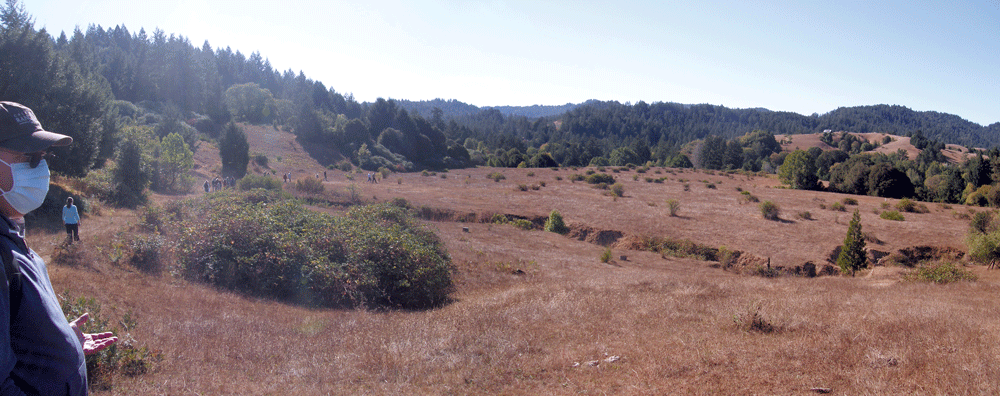
Lots more information I just can’t fit in this time, like some intense history from the “Lost Coast” and some perspectives and details of the engineered and elaborate flow-augmentation project planned for Redwood Creek at Briceland, with both multiple potential benefits and serious hazards. Additional third party and public review are scheduled. Getting in touch with the Salmonid Restoration Federation, and examine the wealth of information they have about the project, including a report by long-time dedicated restorationist Bill Eastwood ([email protected]) will help you get a grip on the project.
Please help out where and when you can. Check out the work and other information on Sanctuary Forest, the Institute for Sustainable Forestry (ISF), and EPIC.
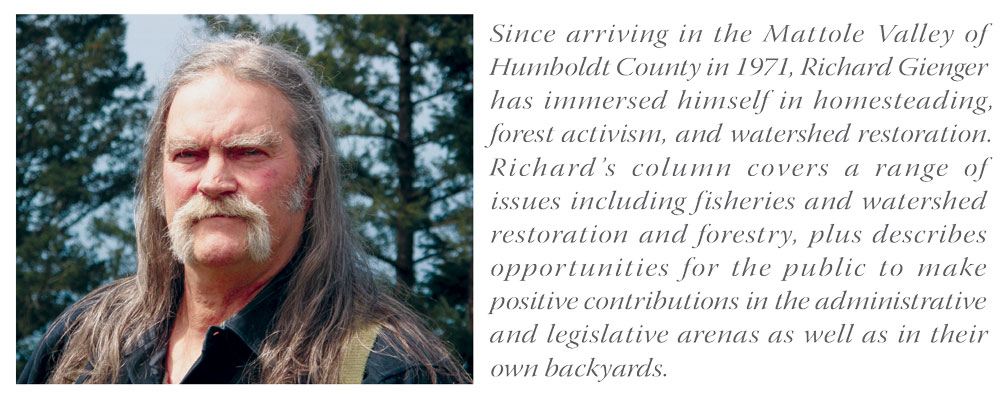
To Get Involved
Richard Gienger
[email protected]
707-223-6474
Save California Salmon
www.californiasalmon.org
Forests Forever
www.forestsforever.org
Friends of the Eel River
eelriver.org
Institute for Sustainable Forestry
www.instituteforsustainableforestry.org
Lost Coast League
www.lostcoastleague.org
Redwood Forest Foundation, Inc.
www.rffi.org
Salmonid Restoration Federation,
calsalmon.org
Sanctuary Forest
sanctuaryforest.org
Why Forests Matter
whyforestsmatter.org
